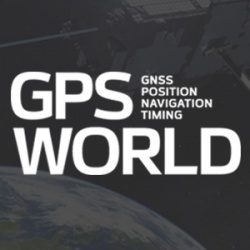
GNSS CEOs see bright future, alternative PNT promises well
December 28, 2016
It has been a good year for all global navigation satellite systems (GNSS), as the chief executives of […]
Read More

It has been a good year for all global navigation satellite systems (GNSS), as the chief executives of […]

Pursuant to a recent announcement of new PNT solutions independent of GPS/GNSS signals, provided via the Iridium constellation, […]

Exploiting terrestrial signals of opportunity (SOPs) can significantly reduce the vertical dilution of precision (VDOP) of a GNSS navigation solution. Simulation and experimental results show that adding cellular SOP observables is more effective in reducing VDOP than adding GNSS space vehicle (SV) observables.

According to UrsaNav Inc., the Wildwood, NJ eLoran transmitter will be continuously broadcasting from 0900 (EST) on 21 […]

Wide-Area Wireless Network Synchronization with LocataNets The United States Naval Observatory conducted several independent frequency synchronization experiments in […]

NASA plans to install a Locata network (LocataNet) as the core positioning technology for safety-critical unmanned aerial systems […]

Potential GNSS Back-up Improves to GPS-Level AccuracyA new enhanced differential Loran system demonstrates 5-meter accuracy not achievable by the current DLoran system, and requires less expensive reference stations. A prototype tested in Rotterdam’s Europort area uses standard mobile telecom networks and the Internet to reduce correction data latency — a key source of error — by one to two orders of magnitude.

For some years now, we have been talking about GNSS interoperability. The concept has received so much careful […]
Follow Us